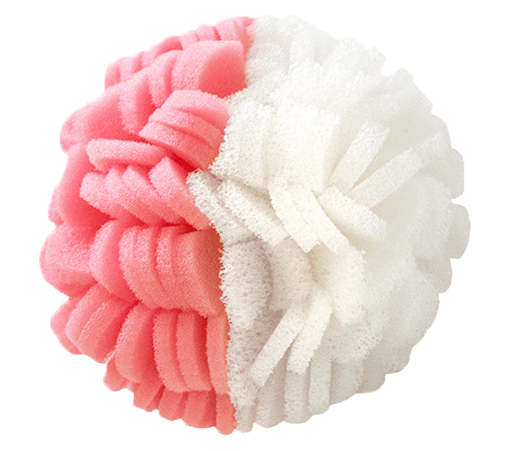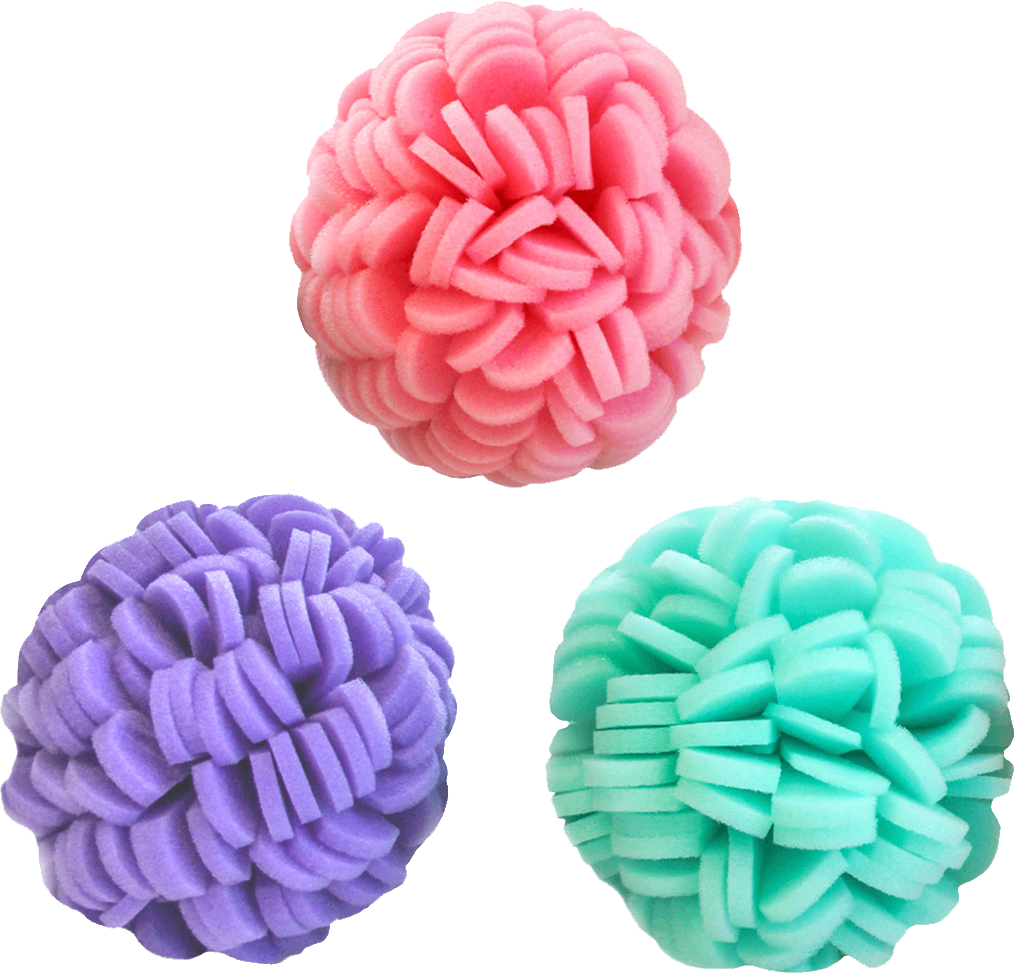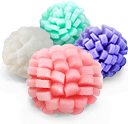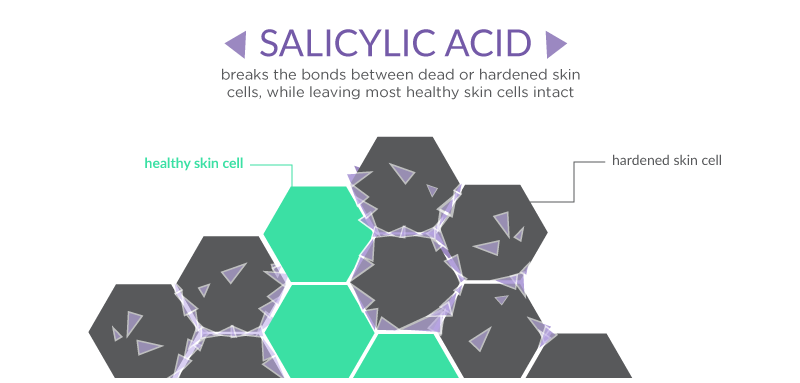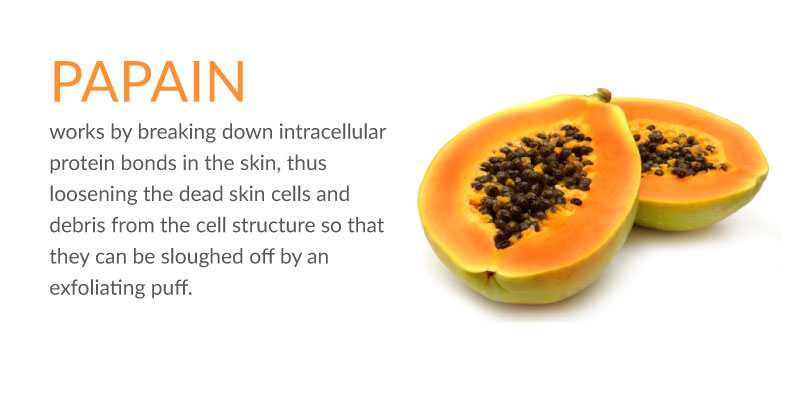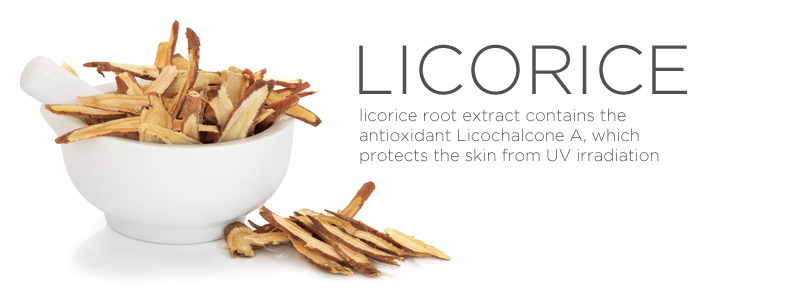On our ViaBuff blog we frequently recommend pairing our Exfoliating Puffs with a serum that contains potent exfoliating ingredients like salicylic acid and papain. However, it’s often difficult to find products that contain appropriate concentrations of active ingredients but which won’t irritate the skin. Cue the Dermalogica Daily Microfoliant (Dermalogica, $54.00) which is packed with salicylic acid, papain, rice bran, and green tea among a host of other awesome ingredients that ensure beautifully vibrant skin. Even better, Dermalogica claims that their formulation is so gentle that you can use it every day. Want to learn more about why we love Dermalogica Daily Microfoliant’s formulation? Read more below!
Salicylic Acid
A good exfoliating cream would not be complete with salicylic acid. What makes this ingredient so special is its keratolytic properties, which lead it to weaken the skin cells’ intercellular bonds. This in turns loosens old and hardened skin cells that can be exfoliated away with the ViaBuff Exfoliating Puff, or a similar tool. Topically-applied salicylic acid also decreases the rate of keratinocyte proliferation, meaning that salicylic acid may help to limit the number of dead skin cells that your body produces.
Even better, low concentrations of salicylic acid have indicated potential in treating plaque psoriasis and comedonal acne, whereas concentrations between 10% to 40% increased the appearance of warts and localized hyperkeratotis (Journal of the American Academy of Dermatology, Archives of Dermatological Research)
There is also some evidence that salicylic acid (as a peel in concentrations of 20% – 30%) can help to treat signs of post-inflammatory hyperpigmentation. In research published in the journal Dermatologic Surgery, study participants reported significant improvements in the appearance of hyperpigmentation, though blind testers and the study experimenters failed to find statistically significant changes. While more research is needed to confirm salicylic acid’s role in treating hyperpigmentation, it would seem that this awesome exfoliative ingredient holds great potential.
Papain
Though far less famous than the exfoliator salicylic acid, the enzyme papain (found from papaya and pineapple) packs a punch when it comes to exfoliation. Papain works by breaking down intracellular protein bonds in the skin, thus loosening the dead skin cells and debris from the cell structure so that they can be sloughed off by an exfoliating puff. (Cosmetic Dermatology, U.S. Patent 8377434). Enzyme-based keratin removal generally has a low potential to cause irritation and inflammation, meaning that papain-containing serums are generally gentle enough for those with sensitive skin.
Papain’s exfoliative properties don’t apply to exfoliate normal and healthy skin; research has repeatedly demonstrated papain’s role in wound healing. For example, papain can remove necrotic (dead) and damaged tissue from ulcers and gangrenous patches of skin (Journal of Biomedicine and Biotechnology). When combined with urea, topically-applied papain greatly reduced the number of necrotic (dead) tissue around ulcer wounds, and increased both the amount of granulation tissue and the rate of epithelization (Wounds).
Rice Bran
Rice bran is a great ingredient for those looking to treat signs of aging or maintain vibrant skin. For example, one study found that topically-applied rice bran significantly improved skin roughness, thickness, and elasticity within 28 days of use. Rice bran also increased hydration and lightened skin within 28 days of application (Pharmaceutical Biology). Rice bran also contains the anti-oxidant gamma-oryzanol which can hinder lipid peroxidation and scavenge free radicals that damage the skin (International Journal of Pharmaceutics)
Licorice Root Extract
Though relatively uncommon in skin care, licorice root extract is still an ingredient worth using. For example, licorice root extract contains the antioxidant Licochalcone A, which protects the skin from UV irradiation by activating cytoprotective enzymes in the skin (Experimental Dermatology, Science Daily) .
Worried that exfoliation will reveal dull or lackluster skin? Never fear; licorice root extract is renowned for its skin lightening properties. Tyrosinase is an enzyme that plays a role in melanin (dark skin pigment) biosynthesis, which in turn gives color to blemishes such as scars, age spots, and melasma. Fortunately, licorice root extract contains the compounds glabrene and isoliquiritigenin, which can inhibit tyrosinase activity and subsequently melanin production (Journal of Agricultural and Food Chemistry, Journal of Agricultural and Food Chemistry, Journal of Investigative Dermatology)
Green Tea
Few skin care ingredients rival green tea in terms of both strength and versatility. Topically-applied green tea has been shown to inhibit UVB ray-induced erythema, inflammatory leukocytes and oxidative stress in the skin (Current Drug Targets – Immune, Endocrine, and Metabolic Disorders) . Similarly, topically-applied green tea is thought to play a significant role in both treating and preventing skin cancer. One study from the journal Clinical Cancer Research postulated that green tea’s efficacy was due in part to its ability to inhibit the formation of UVB-induced cyclobutane pyrimide dimers, which in turn inhibits carcinogenesis (cancer formation).
Aside from its antioxidant capabilities, green tea is also a great ingredient for maintaining general skin health. For example, when combined with a 300 mg, twice-daily green tea oral supplement, topically-applied green tea was found to significantly increase skin’s elasticity during an eight-week trial (Dermatologic Surgery)Research from the journal Hippokratia found that green tea was effective in decreasing sebum overproduction, though it was found to be most effective when paired with lotus (Hippokratia). While this doesn’t sound like anything to brag about, more regularized sebum production means that there is a lower likelihood that dead skin cells and debris will become lodged in one’s pores, thus leaving skin dull, dirty, and acne-prone.
Bottom Line
While there are a number of good salicylic acid exfoliating creams on the market, the Dermalogica Daily Microfoliant is one of our absolute favorites and pairs nicely with our ViaBuff Exfoliating Puffs. It contains the super-exfoliators salicylic acid and papain, which break apart cellular bonds between dead or hardened skin cells. Green tea and rice bran both offer antioxidant protection and improvement to skin’s texture and elasticity, whereas licorice root extract can inhibit tyrosinase activity and leaves skin looking glowing.

